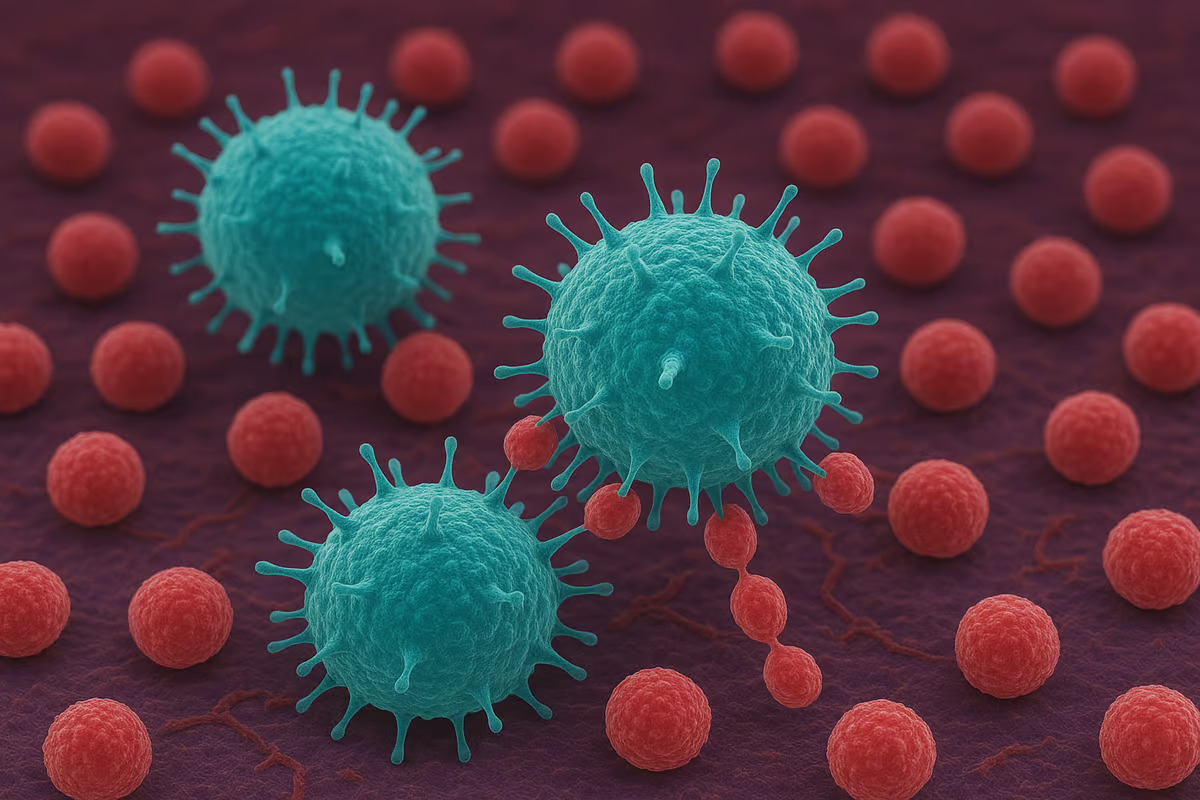 T-reg cells, imagined here in a generative image, are key components of the body’s immune system. A new study says they might also be powerful allies in the fight against pain –
T-reg cells, imagined here in a generative image, are key components of the body’s immune system. A new study says they might also be powerful allies in the fight against pain –
Inside our bodies, tissues called the meninges surround our brain and spinal cord. Not only does this tissue protect these key components of our nervous system, but just a few years ago, it was discovered that they also hold a concentration of T-regulatory immune cells (T-regs). These cells play a central role in our immune system, reducing inflammation and inhibiting other cells that can overreact in the face of some triggers, causing a runaway immune response.
Just last year, the use of T-reg cells in a clinical environment were hailed by researchers as having the potential to treat “almost everything.” Indeed, the application of a gel containing T-reg cells at the site of injuries in mice was shown to speed healing from skin and bone wounds.
The new study on T-regs was led by researchers at the University of California, San Francisco (UCSF). In studying the pain response in mice, they found that the meninges at the base of the spinal cord had an abundance of the powerhouse cells. They further discovered the meninges are involved in a pain-communication response.
“What we are showing now is that the immune system actually uses the meninges to communicate with distant neurons that detect sensation on the skin,” said study lead co-author Sakeen Kashem, UCSF assistant professor of dermatology. “This is something we hadn’t known before.”
Natural opioids
But next the researchers made an unusual discovery.
In seeking to better understand the role these meninges-based T-reg cells played, they used a toxin to suppress them. When that happened, female mice showed an increased sensitivity to pain, while male mice did not. This led the researchers to conclude that, somehow, there was a gender-based difference in how the cells function.
“It was both fascinating and puzzling,” said Kashem, who co-led the study with Allan Basbaum, Ph.D. “It actually made me skeptical initially.”
Further testing revealed that these specific T-reg cells were pumping out the endogenous opioid enkephalin in response to activation by progesterone and estrogen.
“The fact that there’s a sex-dependent influence on these cells – driven by estrogen and progesterone – and that it’s not related at all to any immune function is very unusual,” said study first author Elora Midavaine, a postdoctoral fellow.
The study might help explain why women in menopause – when estrogen and progesterone levels fall – experience chronic pain, and also why certain painkilling drugs are more effective in women than men.
–
[For the balance of this very important article, please visit: https://newatlas.com/medical/female-hormones-opioids/]
–
The findings have been reported in the journal Science.
Source: University of California, San Francisco via Medical Xpress
–
























